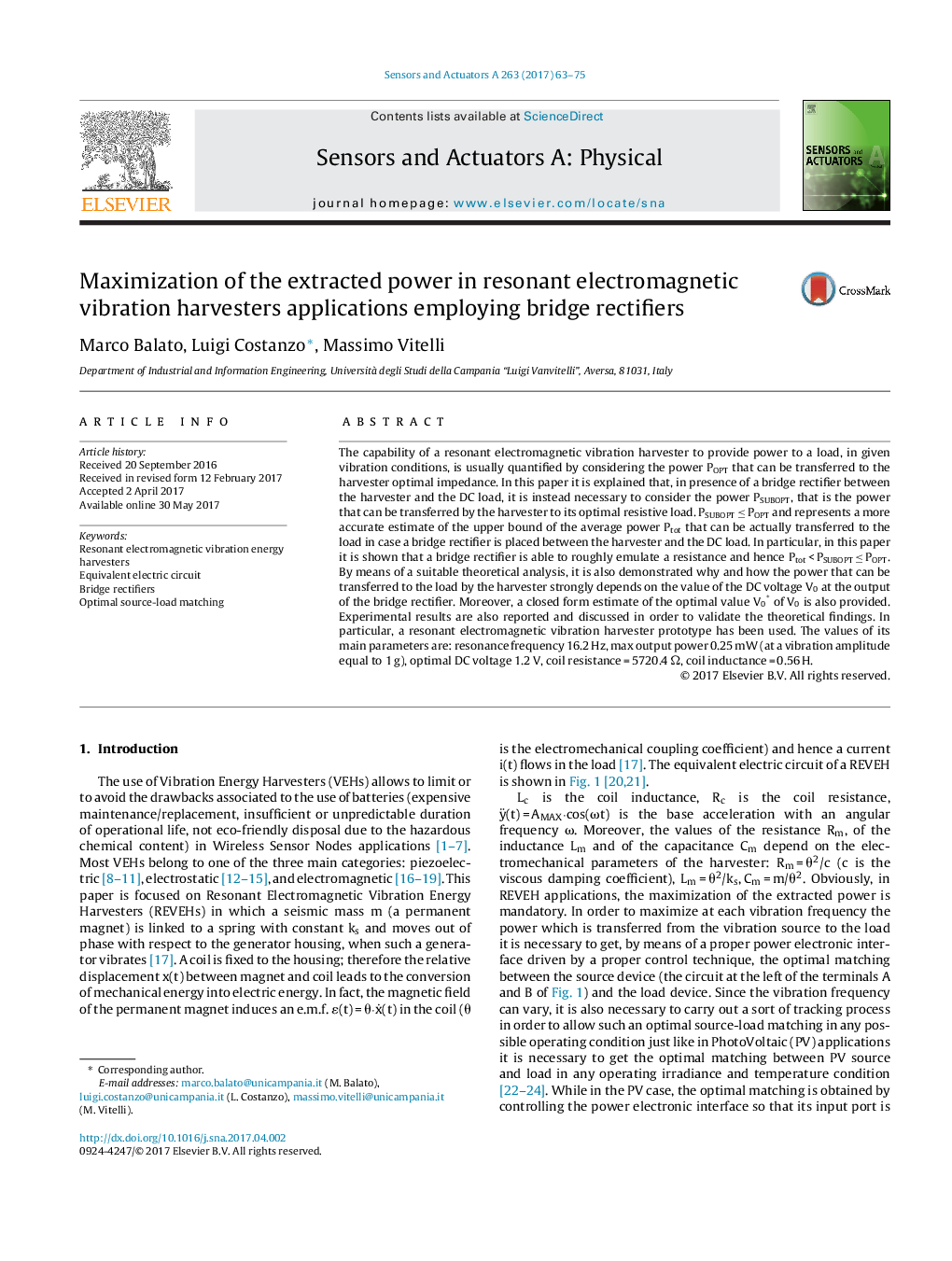| Article ID | Journal | Published Year | Pages | File Type |
|---|---|---|---|---|
| 5008051 | Sensors and Actuators A: Physical | 2017 | 13 Pages |
Abstract
The capability of a resonant electromagnetic vibration harvester to provide power to a load, in given vibration conditions, is usually quantified by considering the power POPT that can be transferred to the harvester optimal impedance. In this paper it is explained that, in presence of a bridge rectifier between the harvester and the DC load, it is instead necessary to consider the power PSUBOPT, that is the power that can be transferred by the harvester to its optimal resistive load. PSUBOPT â¤Â POPT and represents a more accurate estimate of the upper bound of the average power Ptot that can be actually transferred to the load in case a bridge rectifier is placed between the harvester and the DC load. In particular, in this paper it is shown that a bridge rectifier is able to roughly emulate a resistance and hence Ptot < PSUBOPT â¤Â POPT. By means of a suitable theoretical analysis, it is also demonstrated why and how the power that can be transferred to the load by the harvester strongly depends on the value of the DC voltage V0 at the output of the bridge rectifier. Moreover, a closed form estimate of the optimal value V0* of V0 is also provided. Experimental results are also reported and discussed in order to validate the theoretical findings. In particular, a resonant electromagnetic vibration harvester prototype has been used. The values of its main parameters are: resonance frequency 16.2 Hz, max output power 0.25 mW (at a vibration amplitude equal to 1 g), optimal DC voltage 1.2 V, coil resistance = 5720.4 Ω, coil inductance = 0.56 H.
Keywords
Related Topics
Physical Sciences and Engineering
Chemistry
Electrochemistry
Authors
Marco Balato, Luigi Costanzo, Massimo Vitelli,
